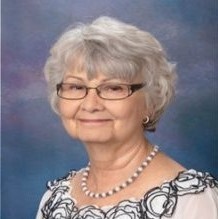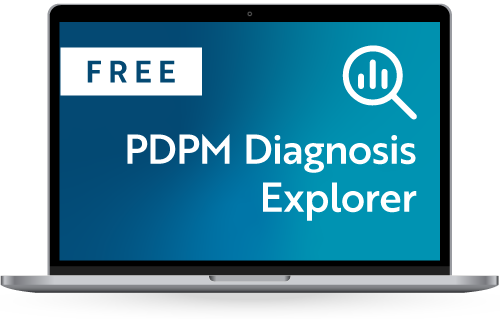PDPM is the biggest regulatory change to hit the industry in decades. With the new reimbursement model going from a fee-for-service to person-centered care, operators have been challenged to change their processes to ensure success under the new model.
While there are many different methods, the one core theme to success requires operators to create new workflows ensuring that PDPM relevant information is collected sooner and in a comprehensive manner. Operators have gravitated towards solutions to assist with change management, but the biggest impact they can make to increase organizational success and compliance is better Practitioner engagement.
Join us for this free webinar as we discuss the true impact on changes to processes, organizational culture, and collaboration requirements.[On-demand webinar] PDPM: How to engage your practitioners for better outcomes
Dr. Steven Buslovich & Margaret Sayers, MS, NP | Patient Pattern
What you’ll learn
- How engaging your medical directors and practitioners can enhance the assignment of diagnoses to improve financial and clinical outcomes
- Tools you will need to reduce or eliminate paper verification of diagnoses
- Areas where Practitioners can help with financial and clinical outcomes
- Functions and features that are needed in solutions in order to encourage practitioner adoption
- What Phase II of PDPM entails
- Providing tools for supporting documentation around active diagnoses
- Developing IPA processes that include practitioners to identify and support meaningful changes in condition
- Compliance solutions to reduce audit and wrongful diagnosis litigation
About our speakers
 Dr. Steven Buslovich, Co-Founder/CEO of Patient Pattern, is an Assistant Clinical Professor at the University at Buffalo School of Medicine. He is a practicing geriatrician and medical director of several nursing homes and post-acute care facilities in Western NY. He is an active executive committee member of the American Geriatrics Society (AGS); Advancing Excellence in Long Term Care Collaborative; Society for PALTC Medicine serving on the Public Policy and Clinical Practice Guidelines Committee; and has won AMDA’s Shark Tank Innovation Award. Dr. Buslovich is working with CMS and ONC to standardize clinical data elements across all post-acute care settings. Dr. Buslovich has presented nationally on PDPM to audiences from many organizations and has published a white paper on PDPM for Medical Directors that has been distributed to AMDA members. Dr. Steven Buslovich is also the co-founder of Patient Pattern, an advanced Patient Clinical Insights solution designed to help manage clinical outcomes and optimize practitioner decision support for PDPM.
Dr. Steven Buslovich, Co-Founder/CEO of Patient Pattern, is an Assistant Clinical Professor at the University at Buffalo School of Medicine. He is a practicing geriatrician and medical director of several nursing homes and post-acute care facilities in Western NY. He is an active executive committee member of the American Geriatrics Society (AGS); Advancing Excellence in Long Term Care Collaborative; Society for PALTC Medicine serving on the Public Policy and Clinical Practice Guidelines Committee; and has won AMDA’s Shark Tank Innovation Award. Dr. Buslovich is working with CMS and ONC to standardize clinical data elements across all post-acute care settings. Dr. Buslovich has presented nationally on PDPM to audiences from many organizations and has published a white paper on PDPM for Medical Directors that has been distributed to AMDA members. Dr. Steven Buslovich is also the co-founder of Patient Pattern, an advanced Patient Clinical Insights solution designed to help manage clinical outcomes and optimize practitioner decision support for PDPM.
 Margaret Sayers, MS, NP, VP of Product and Research at Patient Pattern, is a Geriatric Nurse Practitioner. She is a veteran of PALTC having spent four decades in long-term care facilities, from assisted living to skilled facilities, in a variety of nursing, administrative, and clinical roles. Margaret is a partner in Patient Pattern, Inc. and along with a team of experts in geriatrics, IT, health policy, and data analytics, her focus has been on developing frailty risk based software to identify and manage the most vulnerable, clinically complex patients residing primarily in the long term care setting. The software is designed to analyze routinely collected MDS data to calculate a frailty risk score paired with clinical decision support and geriatric, evidence-based management recommendations. These insights help clinicians to frame communications with patients and families, helping to align their expectations with a realistic picture of the patient’s physiological reserve and anticipated response to acute stressors.
Margaret Sayers, MS, NP, VP of Product and Research at Patient Pattern, is a Geriatric Nurse Practitioner. She is a veteran of PALTC having spent four decades in long-term care facilities, from assisted living to skilled facilities, in a variety of nursing, administrative, and clinical roles. Margaret is a partner in Patient Pattern, Inc. and along with a team of experts in geriatrics, IT, health policy, and data analytics, her focus has been on developing frailty risk based software to identify and manage the most vulnerable, clinically complex patients residing primarily in the long term care setting. The software is designed to analyze routinely collected MDS data to calculate a frailty risk score paired with clinical decision support and geriatric, evidence-based management recommendations. These insights help clinicians to frame communications with patients and families, helping to align their expectations with a realistic picture of the patient’s physiological reserve and anticipated response to acute stressors.





